 |
 |
 |
 |
Specifications for the Generalised Nuclear Database Structure (GNDS)
Version 1.9
Knowledge of basic nuclear physics data is essential for the modelling and safe operation of all types of nuclear facilities. The de facto international standard format, Evaluated Nuclear Data File 6 (ENDF-6) format, was designed originally for 1960s era punch-card readers. The replacement of the system of codes built off this format has been recognised as an important initiative.
|
The ability to use increasingly high-fidelity nuclear physics, coupled to accurate uncertainties, is crucial for advanced simulations. This in turn requires more detailed and accurate data, then requiring improvements to the data storage standards, simultaneously enabling robust Quality Assurance and transfer of knowledge to the next generation. In 2013, the NEA Working Party on International Nuclear Data Evaluation Co-operation (WPEC) launched a project to review the requirements for an international replacement for ENDF-6. The recommendations prompted the creation of a new Expert Group on a Generalised Nuclear Data Structure (GNDS) in 2016 that has used these requirements as the framework for a new format specification. Following rigorous international review, version 1.9 was unanimously approved as the first official published format.
|
 |
 |
Unlocking Reductions in the Construction Costs of Nuclear
A Practical Guide for Stakeholders
Today, with the completion of First-of-a-Kind Gen-III nuclear reactors, the nuclear sector is at a critical juncture. These reactors have led in several parts of the world to delays and construction costs overruns that have challenged the competitiveness of nuclear power and are driving the risk perception of future projects. Against this background, a review of historical and recent lessons learnt from nuclear and non-nuclear project offers ample evidence that nuclear new build can be delivered cost and time-effectively.
|
This study assesses the policy and governance frameworks needed to drive positive learning and continuous industrial performance for nuclear new build. The study also explores the risk allocation and mitigation priorities needed to define adequate financing schemes for these projects. In the longer-term, it identifies cost reduction opportunities associated with the harmonisation of code and standards and licensing regimes and new innovative designs (i.e. small modular reactors and advanced reactors).
|
 |
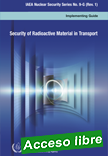 |
Management of Spent Fuel from Nuclear Power Reactors
Learning from the Past, Enabling the Future
IAEA Nuclear Security Series No. 9-G (Rev. 1)
This updated version of IAEA Nuclear Security Series No. 9, Security of Radioactive Material in Transport, is intended to facilitate the establishment of an internationally consistent approach to security of radioactive material in transport. It builds on the relevant recommendations of various existing IAEA Nuclear Security Series publications and is applicable to the security of packages containing radioactive material that could cause unacceptable radiological consequences if used in a malicious act during international and domestic transport.
|
It is also relevant to the security of some nuclear materials of category III and below during transport, due to the radioactive nature of the material. Guidance on protection against unauthorized removal and sabotage is also covered.
|
 |
 |
Sustaining a Nuclear Security Regime
IAEA Nuclear Security Series No. 30-G
This publication addresses the sustainability of all aspects of a national nuclear security regime, including those relating to nuclear material and nuclear facilities, other radioactive material and associated facilities, and nuclear and other radioactive material out of regulatory control. The publication is relevant for States that have established a nuclear security regime as well as for States that are in the process of establishing one.
|
It includes guidance on how to address challenges in sustaining a nuclear security regime over time. It also addresses the initial development and implementation of the regime, particularly where sustainability can be built into it as part of its design.
|
 |
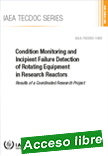 |
Condition Monitoring and Incipient Failure Detection of Rotating Equipment in Research Reactors
IAEA TECDOC No. 1920
Most research reactors share the common characteristics of a long operating lifetime. With the advancement of digital technology, substantial improvements have occurred in the tools that can be applied in the maintenance and monitoring of structures, systems and components (SSCs), enabling an understanding of equipment performance far beyond that available only a few decades ago.
|
Several of these tools, as well as the supporting technology, have been endorsed by regulatory authorities, providing further value to their application to increase availability and reliability of research reactors. These issues and related advancements were the topic of an IAEA coordinated research project and the results are presented in this publication. It provides methods and guidance for monitoring the health of rotating equipment of research reactors to avoid lengthy and costly shutdowns while promoting safe and reliable operation.
|
 |
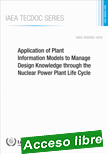 |
Application of Plant Information Models to Manage Design Knowledge through the Nuclear Power Plant Life Cycle
IAEA TECDOC No. 1919
A plant information model (PIM) is a set of interlinked information about plant structures, systems and components, incorporating plant data, relationships and rules used to integrate, represent, and describe nuclear facility processes and data, for each phase of the facility lifecycle. Application of the PIM provides an opportunity to radically improve knowledge, information and data capture, integration, use and transfer between stakeholders if industry-wide standards and best practices are adopted.
|
. A knowledge-centric plant information model could be developed and leveraged as a modern and efficient approach to better support, manage and enable seamless sharing, transfer and use of sustainable design knowledge within and across each nuclear power plant life cycle phase. The purpose of this publication is to provide an overview of PIMs, emphasize the importance of their application in support and management of design knowledge throughout the nuclear power plant life cycle and present an overview of a knowledge-centric plant information model that builds on the basic concept of a PIM. The target users of this publication are decision-making organizations in Member States having experience with nuclear power programmes and those embarking on new nuclear power programmes.
|
 |
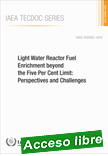 |
Light Water Reactor Fuel Enrichment beyond the Five Per Cent Limit: Perspectives and Challenges
IAEA TECDOC No. 1918
The limitation of 235U enrichment is a current concern among IAEA Member States. In response, work has been undertaken to provide a platform to facilitate a comprehensive review of the current status, prospects and challenges associated with the use of fuels having enrichments higher than 5 % 235U in light water reactors. This publication is the outcome of two technical meetings and compiles the results and conclusions in terms of benefits to be obtained from the use of high assay low enriched uranium (HALEU) fuel, with due consideration of safety issues that arise from its use.
|
It details technological options and corresponding issues regarding fuel and core design, safety analysis and assessments relevant to manufacturing, handling, transportation, storage, irradiation, and performance in normal and accident conditions.
|
 |
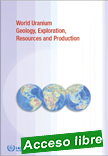 |
World Uranium Geology, Exploration, Resources and Production
.
This publication is a comprehensive contemporary ‘one stop’ summary and reference volume for world uranium geology and resources allowing insight into potential future uranium discoveries and supply. This is based upon, and updated from, the International Uranium Resource Evaluation Project (IUREP) undertaken by the International Atomic Energy Agency (IAEA) and the Nuclear Energy Agency, Organisation for Economic Cooperation and Development (OECD-NEA) with supporting data from 27 editions of the joint OECD-NEA/IAEA ‘Red Book’.
|
For the sake of completeness, this publication also includes a review and comparison of the various outputs of the original IUREP project with new data visualisation incorporating previously difficult to access information, as well as 15 global maps of different uranium deposit types as a separate Annex for download.
|
 |
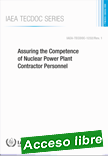 |
Assuring the Competence of Nuclear Power Plant Contractor Personnel
IAEA TECDOC No. 1232/Rev. 1
Contractor personnel provide essential services to nuclear power plants (NPPs). They have required levels of competency and must interface effectively with nuclear power plant personnel when performing their assigned duties. It is in this context that this publication offers a framework for assuring the competence of such contractor personnel. This publication reflects the latest practices relevant to the involvement of contractors at NPPs, and details the means currently used to assure their competence.
|
It seeks to provide an understanding of the definition and use of contractors and how they are engaged through the contracting process. The publication will be a useful resource for managers and team leaders of nuclear facilities who are responsible for the competence of NPP personnel including contractors; training staff who are involved in the contracting process; subject matter experts who are involved in the contract specification, and project managers and other staff who may have responsibility for contractor personnel on site.
|
 |
 |
 |
Establishing and Operating a National Nuclear Security Support Centre
Revision of IAEA-TECDOC-1734
This publication presents a systematic approach to establishing and operating a national nuclear security support centre (NSSC) as a means to strengthen the sustainability of nuclear security in a State. It provides specific practical guidance to States, detailing a straightforward decision making and project management process drawn from good practices in establishing and operating an NSSC that were identified through the experience and lessons learned from States within the NSSC Network.
|
The publication, which is a revision of TECDOC-1734, is intended for use by the IAEA and the NSSC Network as the primary reference for activities to support States with the establishment and operation of an NSSC.
|

|
|
|
| |
|
|
| |
| |
|
|
| |
| |
|
|
| |
| |
|
|
|
| |
| |
